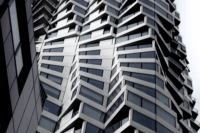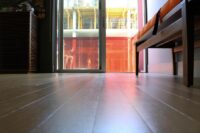- Home
- Articles
- Architectural Portfolio
- Architectral Presentation
- Inspirational Stories
- Architecture News
- Visualization
- BIM Industry
- Facade Design
- Parametric Design
- Career
- Landscape Architecture
- Construction
- Artificial Intelligence
- Sketching
- Design Softwares
- Diagrams
- Writing
- Architectural Tips
- Sustainability
- Courses
- Concept
- Technology
- History & Heritage
- Future of Architecture
- Guides & How-To
- Art & Culture
- Projects
- Interior Design
- Competitions
- Jobs
- Store
- Tools
- More
- Home
- Articles
- Architectural Portfolio
- Architectral Presentation
- Inspirational Stories
- Architecture News
- Visualization
- BIM Industry
- Facade Design
- Parametric Design
- Career
- Landscape Architecture
- Construction
- Artificial Intelligence
- Sketching
- Design Softwares
- Diagrams
- Writing
- Architectural Tips
- Sustainability
- Courses
- Concept
- Technology
- History & Heritage
- Future of Architecture
- Guides & How-To
- Art & Culture
- Projects
- Interior Design
- Competitions
- Jobs
- Store
- Tools
- More

Businesses’ approaches to designing commercial office space are changing quickly. Flexible workplaces that prioritize employees are replacing the traditional designs with designated workstations and inflexible layouts. In order to design offices that satisfy the demands of a changing workforce, high priority should be placed on sustainability, well-being programs, and flexibility. The major trends influencing commercial office spaces in 2025 are delved into below.
Hybrid and Flexible Workspaces
There is no immediate end in sight to hybrid work. According to McKinsey, more than 90% of companies will keep providing hybrid work in some capacity. And office spaces now operate differently as a result of this adjustment. Companies are abandoning designated workstations in favor of hot-desking, adjustable chairs, and touchdown areas where staff members can work comfortably while at work.
Whether you’re in Manhattan or Hong Kong serviced offices, or serviced workspace in central London, technology is becoming a more significant feature in commercial workplace design. These days, meeting rooms have AI-powered collaboration solutions that facilitate smooth cooperation between remote and in-person staff. Offices are becoming hubs for collaboration, striking a balance between confined rooms for concentrated work and open areas for collaborative projects.
Multi-Purpose and Modular Layouts
Workspaces must accommodate the various activities that take place during the day. Companies are using modular designs that can be altered to meet evolving needs in place of fixed layouts.
Businesses are able to design dynamic office environments that change with their staff thanks to movable walls, adjustable furniture, and multipurpose areas. A conference room in the morning can be transformed into a collaborative brainstorming area by the afternoon. Real estate value is increased and efficiency is enhanced with this type of flexible office space design.
Biophilia, Design Inspired by Nature
Incorporating nature into the workplace is becoming more common as evidence emerges that biophilic architecture can lower stress and increase productivity. More and more commercial designers and business tenants are getting on board, using natural materials, indoor plants, and living walls to enhance the air quality and create a more welcoming workspace.
Another key focus for bringing the natural world into the workspace is making the most of natural light. Open floor patterns that let sunlight flood the office, skylights, and large windows all contribute to a more positive work environment and less staff tiredness.
Tech-Powered Smart Workplaces
The design of commercial spaces is being overhauled by AI and IoT (the Internet of Things). Smart technologies that automate security, interior climate management, and lighting are being integrated to increase both occupant comfort and energy efficiency.
Occupancy sensors, for instance, can adjust heating and air conditioning based on real-time office usage, reducing costs and environmental impact. Another trend is the rise in popularity of smart desks and meeting spaces with AI-powered scheduling, voice-activated controls, and wireless charging. These technologies help businesses optimize their work environments without needless waste by making offices more user-friendly and efficient.

Design Emphasizing Employee Well-Being
To draw and keep top personnel, businesses are investing in office settings that prioritize wellbeing. According to a 2024 Deloitte survey, workplace well-being and flexibility programs can boost worker productivity by 29%.
Many commercial designs are using the following to promote well-being:
- Quiet areas for rest and concentrated work.
- Yoga rooms and fitness centers available on-site.
- Ergonomic workstations including movable chairs and sit-stand desks.
Workers want a comfortable, healthy workspace that promotes their mental and physical wellness, not just a desk.
‘Resimercial’ Office Design
Not just another smashed-together portmanteau of disparate words, the resimercial trend gracefully blends residential and commercial design elements to make workplaces feel more comfortable and inviting. With many office employees now accustomed to working from home, businesses are incorporating softer furniture, warm lighting, and lounge-like areas to create a more relaxed atmosphere.
Instead of sterile office layouts, companies are focusing on cozy breakout spaces, casual meeting areas, and home-like decor to make the office a place employees actually want to spend time in. In order to make employees feel comfortable while still being productive, the goal with resimercial design is to close the perceptual gap between in-office cooperation and remote work.
Sustainability and Eco-Friendly Office Spaces
Sustainability is becoming more than just a catchphrase that big corporations trot out to greenwash and improve their ESG credentials; it is becoming essential to contemporary commercial design. For businesses looking to lower their carbon footprint, eco-friendly building materials, energy-efficient lighting, and intelligent waste management systems are now commonplace.
Office space design is also being influenced by green certifications such as the U.S. Green Building Council’s LEED (Leadership in Energy and Environmental Design). Designers and workplaces are also putting into practice:
- Offices powered by solar panels and alternative energy sources.
- Fixtures that use less water to lower their usage and utility bills.
- Low-emission and recyclable materials for office décor and furnishings.
In addition to helping the environment, sustainable design helps businesses draw in eco-aware customers and workers.
Bold Colors and Unique Aesthetic Choices
Office design is shifting from the minimalist, neutral aesthetics of the past, instead towards more statement décor and vibrant hues. The deep, earthy hue of Mocha Mousse, Pantone’s 2024 Color of the Year, underscores the growing popularity of cozier, moodier office color schemes.
Moving away from sterile white walls and drab grey partitions, cutting-edge commercial design is trending towards warm browns, deep blues, and forest greens, as well as textured wall treatments, geometric patterns, and striking art pieces. Creating a more dynamic, welcoming, and visually appealing work environment is the main goal of these recent changes.
Inclusive and Accessible Design
The physical workspaces themselves are now becoming more inclusive and adaptable to meet the needs of an increasingly diverse workforce. Businesses and designers are focusing on:
- Height-adjustable desks for ergonomic support.
- Quiet areas for workers who are sensitive to certain stimuli.
- Accessible meeting spaces equipped with assistive technology and spacious entrances.
According to a Skills for Care study, businesses with inclusive, diverse workplaces perform 36% better than industry standards. So, companies that put an emphasis on their workplace’s design accessibility, not just in their policies, it fosters an inclusive culture and improves working conditions.
The Future of Commercial Office Space Design
Commercial office design, as with other design disciplines, will change to accommodate the needs of its end users and wider societal shifts. Businesses that make the investments now, in employee well-being, technology, flexibility, and sustainability, will be in a better position to attract talent and maintain their competitiveness.
Workspaces of the future will be characterized by agile, people-first settings that encourage creativity, collaboration, and hybrid work. Offices are now dynamic spaces that support organizations and individuals in thriving in a world that is changing quickly, not just places to work.
illustrarch is your daily dose of architecture. Leading community designed for all lovers of illustration and #drawing.
Submit your architectural projects
Follow these steps for submission your project. Submission FormLatest Posts
Top 8 Luxury Vacation Rentals Features Guests Love Most
A luxury vacation rental offers an entirely different experience than a typical...
Why Local Expertise Matters: Choosing the Right Plumbers in Townsville
Why Local Expertise Matters: Choosing the Right Plumbers in Townsville When it...
Bathroom Remodel ROI: How to Add $15–30K to Your Home Value in 2025-2026
Outdated bathrooms can drag a listing 20-30% longer on the market. Buyers...
The Key Factors to Review When Comparing Fiber Providers in Minneapolis
Looking for a fiber provider in Minneapolis can feel surprisingly overwhelming. The...












Leave a comment